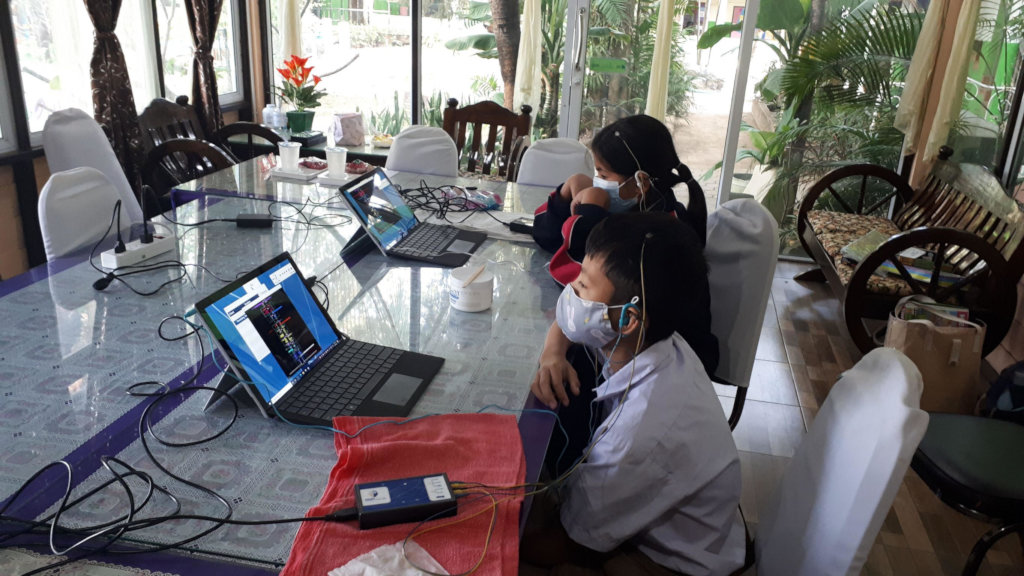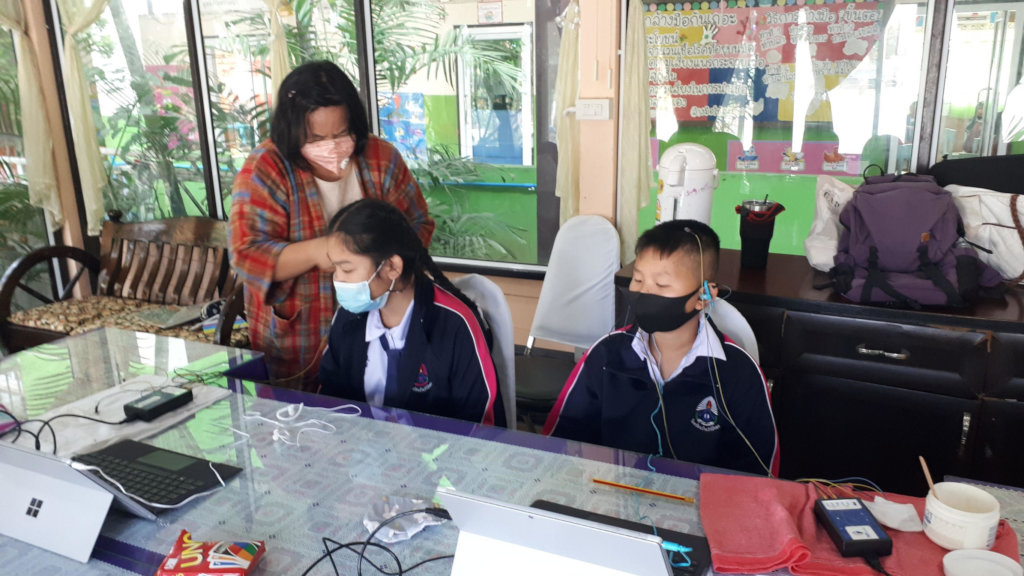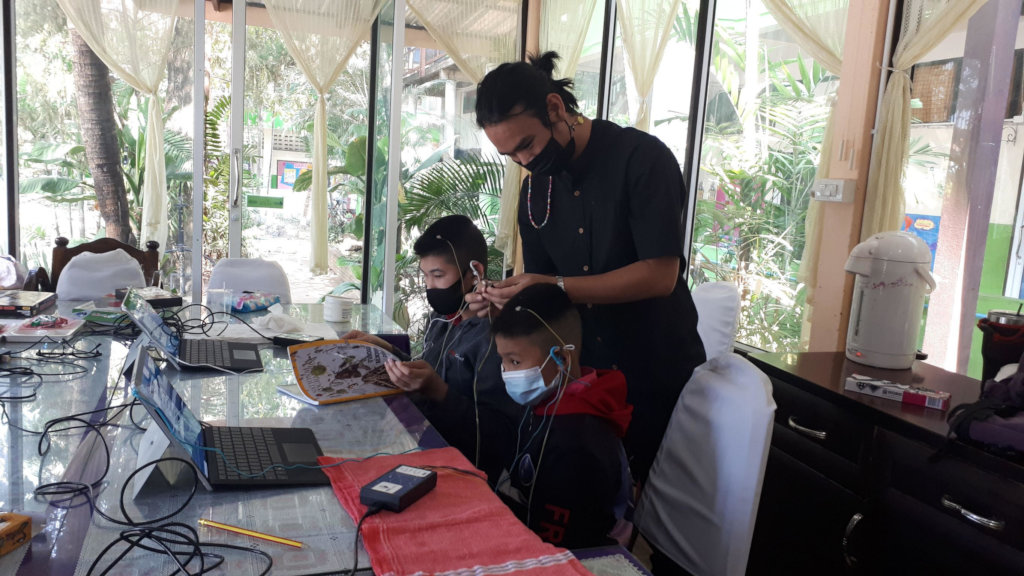By Keiko Samuels | Project Leader
In School B, the 14 students aged 9 to 12, who showed reading delay of more than 2 grade levels were selected by classroom teachers and were certified by a medical doctor to be separated into resource rooms.
In Thailand, the national standardized assessment for fluency is set out and implemented
(1) Curriculum base grade level passages are used to measure the speed and accuracy.
(2) If a student shows perfect fluency in reading the passage for 5 minutes, by scoring 16/16 in raw score, the result is posted as 100%.
(3) The percentile numbers shown tracks progress of each child and the number does not place the child against the whole student population.
(4) Four students demonstrated more than 25 % improvement after Neurofeedback intervention of 20 sessions over 7 months.
(5) This level of improvement had not been demonstrated in clinical trials published in peer review journals. A larger population study with comparison group need to be conducted before scaling up the study.
Table A – Reading fluency scores at T1 (Pre) and T3 (Post) with comparisons
Bar graph B - Reading fluency scores at T1 (Pre) and T3 (Post) and averages
Bar graph C – Reading fluency scores of 4 students demonstrated more than 25% improvement
---------------------------------------------------------------------------------
Project reports on GlobalGiving are posted directly to globalgiving.org by Project Leaders as they are completed, generally every 3-4 months. To protect the integrity of these documents, GlobalGiving does not alter them; therefore you may find some language or formatting issues.
If you donate to this project or have donated to this project, you can receive an email when this project posts a report. You can also subscribe for reports without donating.




